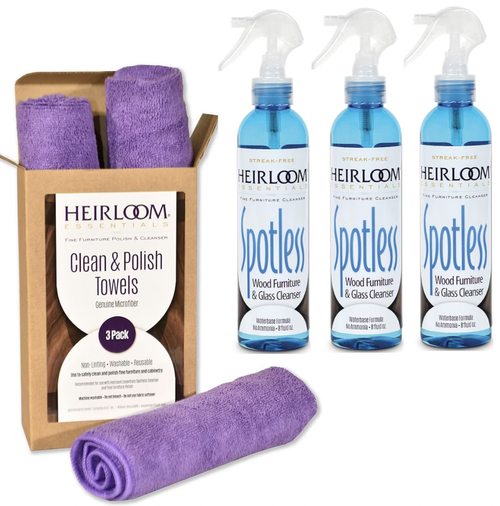Wooden Product Care
Solid Hardwood Care Instructions
Congratulations on your new piece of American Hardwood furniture! A well-made piece of solid hardwood furniture can last for generations. With proper care and maintenance it can continue to look like new as it’s passed on from one household to another. As our culture shifts more toward a synthetic, temporary, and quick way of consumption, sold hard wood furniture offers you an alternative: something that is natural, long-lasting, and, more importantly, shows the inherent grace in aging. As it is a natural material, wood is more vulnerable to the elements. Luckily, there are things you can do – and things you should avoid – to get the longest life out of your furniture. Below are some of the most important things we feel you should know about your solid hardwood furniture, along with proper storage and care instructions. As always, the Sweet Dreams family is here to help if you have any further questions. We hope you enjoy your new furniture for years to come!
VARIATION
Unlike most furniture, which stems from mass production lines that guarantee each piece looks exactly the same, each and every piece of solid hardwood furniture is hand crafted and full of character. No two trees have the same tones or markings, therefore, no two pieces of hardwood furniture will look the same. Each individual piece of wood will absorb stain or varnish in its own unique way. The same can be said for the wood’s grain pattern; one piece of Oak may have more dense grain than another. “Clear” woods are specifically selected as boards with little to no knots or imperfections, while “character” woods may have more knots and imperfections or “character”. All hardwood species undergo a natural aging process. Many species of wood such as Cherry, Maple, and Oak will darken with time while others, such as Walnut, may lighten. Keep in mind that decorations, lamps or table runners placed on your new piece will slow the natural aging process. The surrounding wood will darken or lighten at a natural rate while the wood that is not exposed to oxygen and UV light will not. This will cause “tanlines” on the furniture, which will even out once the decorations are moved. To avoid this, you can rotate the decorations every so often, to ensure that the entire piece is evenly exposed over time.
CATALYZED VARNISH
Catalyzed Varnish is the most commonly used finish in the high-end furniture market. Catalyzed varnish consists of two parts, the finish liquid and a hardener (called the catalyst) that gets mixed in just before application. Catalyzed Varnish has excellent resistance to foods, beverages and common household chemicals. This finish offers a very hard, mar-resistant surface, but like any finish, it may still be scratched or damaged if not cared for properly. Dyes and inks may discolor the finish; the ink and dyes from newsprints and plastic bags may penetrate into the finish when moist. The maximum temperature of things placed on finish should not exceed 140 degrees Fahrenheit.
PLACEMENT
It is recommended to keep furniture away from any direct source of heating and/or cooling such radiators, heating vents or wood stoves, as dry air can cause the wood to warp or crack. Avoid storing furniture in an attic or cellar-type environment.
CLIMATE & HUMIDITY
A natural material; solid hardwood furniture will respond to changes in temperature and humidity by slightly expanding and contracting; swelling in high humidity of summer or shrinking in dry colder months of winter. Wood may warp or split, and under extreme circumstances. Your home’s indoor humidity level should be between 35-45 percent and the temperature between 60-80 degrees all year long. Maine is notorious for its extreme winters, so it may be worth investing in a humidifier and/or dehumidifier. If you have a summer home in Maine, try to make sure that your home remains at an even temperature while you are away, in order to protect your hardwood furniture from environmental extremes. Seasonal gapping or minor cracks in the grain pattern are considered normal and are not considered a defect of materials or craftsmanship.
DUSTING
Regular dusting – every few days or so – is the best way to keep your furniture looking new and preventing dust from settling on the wood. Soft cloths and feather dusters work well, but they will only move the dust away from the furniture and back into the air. A lambs-wool duster with lanolin or a slightly damp terry cloth will capture dust and keep your furniture dust-free for an additional few days.
CLEANING & POLISHING
For routine cleaning use a soft, damp cloth following the grain pattern. It is important to frequently refold the cloth to a clean side as it becomes dirty. A soiled, damp cloth can redeposit soil onto the finish. You may occasionally clean with a non-alkaline soap. Do not use any polishes that contain silicone. We recommend the Amish Heirloom Spotless Cleaner and Fine Furniture Polish, which you can find at Sweet Dreams. When using non-abrasive cleaning products, it is still recommended that you follow-up with a soft cloth and warm, soapy water. The finish of your piece is durable and resistant to most household spills. However, all spills should be wiped up promptly to avoid potential problems. Occasionally, there may be a lingering scent left behind from the Catalyzed varnish. This, much like a new-paint smell, will dissipate over time. It is okay to use a solution of equal parts water and white vinegar if you feel that there is an excessive odor or a mildew scent.
THINGS TO AVOID
Avoid spilling nail polish remover, alcohol or any other solvents on your piece.
Do not use products that are ammonia-based or contain silicone.
Avoid using any polishes that are oil based.
Use polishes sparingly, as they tend to build up a film on the finish that will attract dust and soil. When moving or adding leaves to your table, do not drag it. This places unnecessary stress on the joints.
Never use all-purpose cleaning sprays on your wood furniture, as some contain bleach, alcohol or other chemicals that can stain or strip the wood surfaces.



